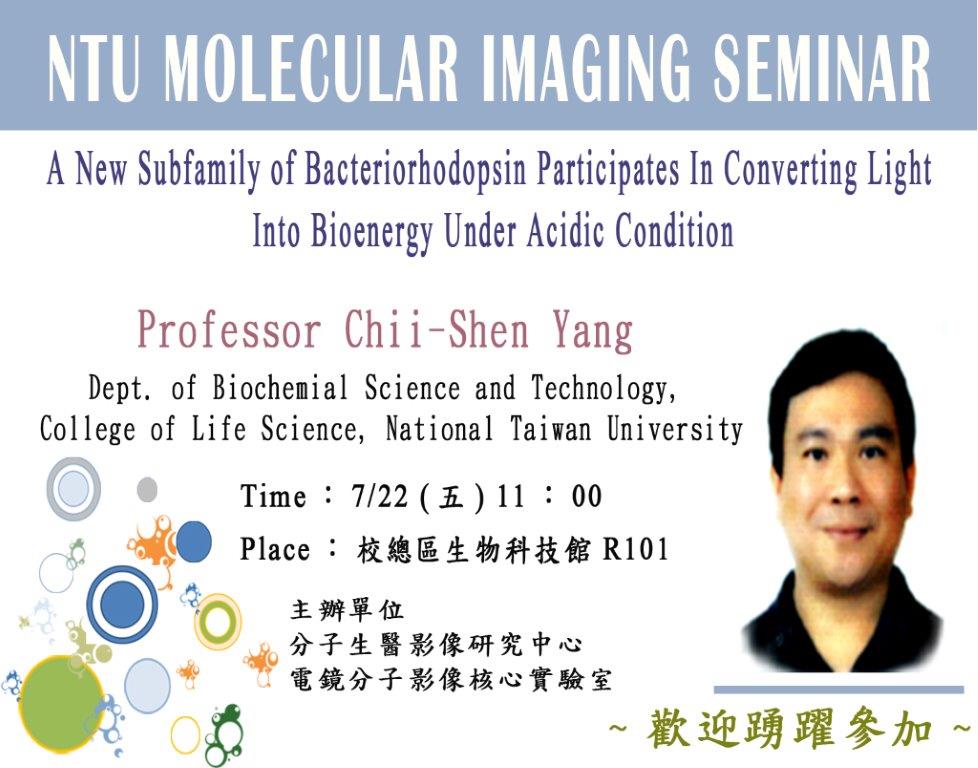

臺大分子生醫影像研究中心7月22日講座
主題:A New Subfamily of Bacteriorhodopsin Participates In Converting Light Into Bioenergy Under Acidic Condition
講者:Professor Chii-Shen Yang (Dept. of Biochemial Science and Technology, College of Life Science, National Taiwan University)
時間:7/22 (五) 11:00
地點:國立臺灣大學校總區生物科技館 R101
Bacteriorhodopsin proteins are light-driven proton pumps feature a seven-transmembrane α-helical region with a lysine-bound retinal that serves as a chromophore responsive to light [1]. These BR proteins respond to ~550 nm light and exert outward proton pumping, resulting in a proton gradient in the extracellular region and consequently facilitate the inflow of protons back into the cell through ATP synthase to generate ATP. Most BR proteins are not optically stable and non-functional under acidic conditions. In 2013, we reported a BR from Haloarcula marismortui, HmBRII [2,3], showed high optical stability in acidic conditions even down to pH of 1.6 and maintained its light-driven proton pumping activity at pH of 4.0. Later in 2015, we identified another BR from Haloquadratum walsbyi, HwBR [3], which also showed optical durability in acidic conditions. The atomic structure of this HwBR was then resolved to unveil such acid-tolerance feature. Together with results of protein sequence analysis and optical properties measurements, we proposed that HwBR and HmBRII belong to a new subfamily of BRs that we have named qR. Furthermore, the crystal structures of HwBR revealed that a unique arginine residue stabilizes the extracellular loop region by forming hydrogen bonds with a threonine residue located in the membrane edge of extracellular region. The importance of this local structure, which shields the interior environment of HwBR from the low pH extracellular area, was further validated and confirmed by the mutagenesis approach. Since this unique arginine also appeared in HmBRII, not any other BR proteins, this residue is then deemed as one of the feature residues in this newly proposed qR sub-family of BR proteins.
●References●
[1] Spudich J. L., Yang C. S., Jung K. H., and Spudich E. N., Annu. Rev. Cell Dev. Biol. 16, 365–392 (2000).
[2] Fu HY, Lin YC, Chang YN, Tseng H, Huang CC, Liu KC, Huang CS, Su CW, Weng RR, Lee YY, Ng WV, Yang CS, J Bacteriol. 192, 5866-5873 (2010).
[3] Fu H. Y., Yi H. P., Lu Y. H., and Yang C. S. Mol. Microbiol. 88, 551–561 (2013).
[4] Hsu MF, Fu HY, Cai CJ, Yi HP, Yang CS, Wang AH, J Biol Chem. 290, 29567-29577 (2015).

